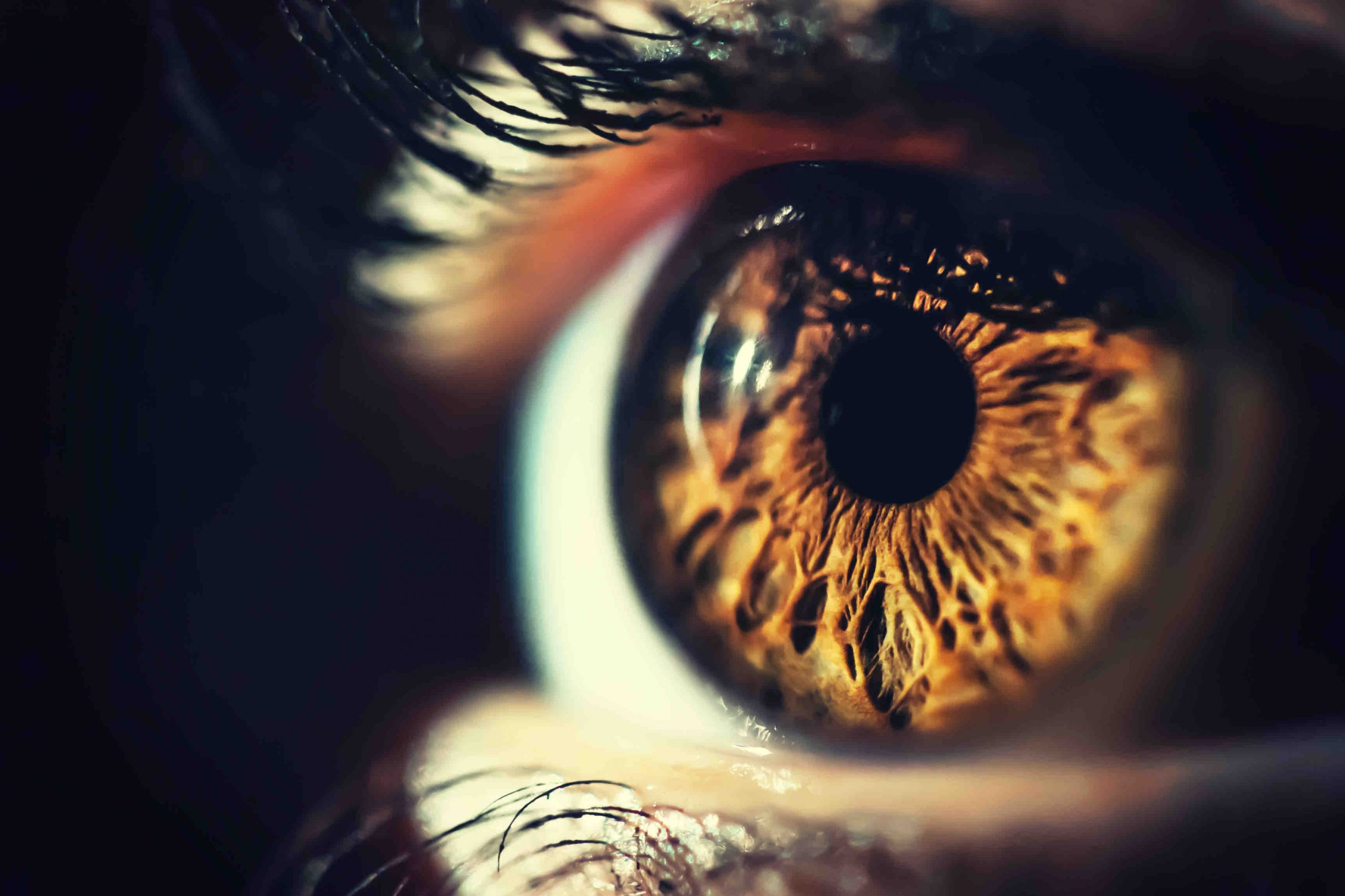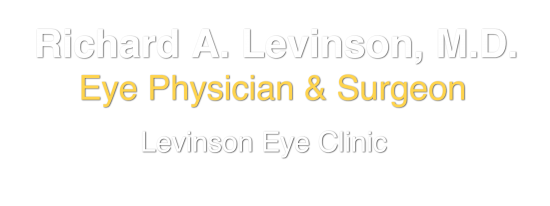
Blog
Detailed Information About Your Eyes
What is the Difference Between
LASIK and PRK Surgery?
Both LASIK and PRK give excellent results.
Both use an Excimer Laser to reshape your cornea.

With LASIK:
a thin flap of corneal tissue is lifted and the laser correction placed on the underlying corneal bed and the overlying corneal flap then repositioned.With PRK:
the correction is placed on the surface of the cornea. However, the surface of the cornea is covered by a thin layer of clear skin, called epithelium, that if lasered, would grow back and the laser effect negated. In PRK, but not LASIK, we have to remove this layer of epithelium prior to performing the Laser. Removing the epithelium is painless. However, after PRK there is discomfort until the epithelium heals, which usually takes about 3 days. I put an extended-wear soft contact lens on your eye after PRK, which stays in for 4 to 5 days after PRK, to allow the epithelium to heal faster. In both PRK and LASIK, I have you use antibiotic drops to prevent infection and anti-inflammatory eye drops to decrease discomfort.I recommend PRK for younger, active patients, for patients with thin corneas, for patients with allergies who may vigorously rub their eyes, and for patients with higher myopic (nearsighted) prescriptions over -5.00 diopters. Presently, I am performing approximately 60 percent PRK and 40 percent LASIK.
If the thought of the flap in LASIK makes you uncomfortable, I would strongly encourage you to consider PRK! PRK is slightly safer and slightly more predictable than LASIK. Also, in my experience, I think the quality of vision is slightly better long term with PRK. The risk associated with the LASIK flap is small, but in 1 to 2 percent of LASIK patients, flap complications occur, but are usually treatable without resultant vision loss. PRK is more uncomfortable (usually watering, light-sensitivity, gritty sensation) than LASIK for 48 to 72 hours post-op. I think the biggest drawback to PRK is that the vision takes longer to clear after PRK than LASIK. LASIK patients typically return to normal activities 1 to 2 days after surgery; PRK patients are typically blurrier than LASIK patients for about a week after surgery but can usually return to work within 5 days after surgery. Typically, 7 to 10 days after PRK, patients are seeing well enough to function without problem, and by 4-6 weeks the vision after PRK is usually excellent. PRK has a lower retreatment rate (1 to 2 percent vs 5 to 10 percent for LASIK) and may have somewhat less glare and dryness than LASIK. I prefer LASIK in hyperopic (farsighted) patients.In Summary, both LASIK and PRK give excellent long term results; PRK is marginally safer than LASIK but is more uncomfortable initially and takes slightly longer to heal.
By Dr. Richard Levinson 2/26/23
For a Free Consultation!
Call 303-939-0347
Need Cataract Surgery?
Imagine being able to see, without the blurred vision caused by your clouded lens?
Cataract surgery is the most common surgery performed in the U.S. today. It is performed on an out-patient basis and can offer significant improvements to vision. In cataract surgery, the clouded lens of your eye is replaced with a plastic lens, an intraocular lens (IOL).
What are the Various Lens Implant Options
The primary goal of cataract surgery is to remove the old, hazy lens in your eye and to replace it with a new, clear artificial lens, to improve your vision.
When selecting the new lens, called an intraocular lens (IOL), surgeons have literally thousands of different IOL designs and powers from which to choose.
We have the opportunity to select a lens to insert that, if you like, can significantly decrease your dependence on glasses. The challenge with having so many different IOL options is to help you decide which option can best meet your needs and expectations. If you don’t mind wearing glasses after your cataract surgery, the IOL choices are relatively simple. If, however, you are interested in decreasing your dependence on glasses after cataract surgery, the options increase significantly. There is not a perfect IOL that focuses perfectly for all distances, like the natural lens in a young, healthy eye. However, there are IOLs available that may be effective in decreasing your dependence on glasses, allowing you to see well enough to pass a vision test for a driver’s license, to see your computer and/or to read menus, books, etc. without glasses. The IOL options we have can be effective at decreasing your dependence on glasses, but they are not perfect. To get your sharpest vision possible, you may still need to wear glasses.
Here are the options for Intraocular Lens Implant (IOL).
1. Set both eyes for distance or for near vision.
PROS:
• Optimize distance vision without glasses.
• No premium charges for a traditional IOL.
CONS:
• If you set both eyes for distance vision, you will need glasses full time for near (reading, mobile phone, etc) and intermediate (computer, speedometer, piano, etc.) and possibly for distance (driving, TV, movies, etc). Or, if you set both eyes for near vision, you will need glasses full time for distance and intermediate (computer, speedometer, piano, etc.) vision. and possibly for near vision.
• Does not correct astigmatism.
2. Monovision- Set dominant eye for distance and non-dominant eye for near.
PROS:
• Good, not sharp, distance and near vison without glasses.
• No additional fees for this traditional IOL.
CONS:
• 50% of patients are bothered by the lack of clarity for distance in the near eye.
• You will likely need glasses for intermediate vision (speedometer, piano, computer).
• May require glasses for distance, especially for night driving, TV, movies, etc. and possibly for reading.
• Does not correct astigmatism.
3. Panoptix Multifocal IOL.
PROS:
• Good distance, intermediate and near vision.
• Corrects astigmatism, if necessary.
CONS:
• Insurance does not cover this premium IOL.
• Cost per eye is $2400.00.
• Glare and halos around lights, especially at night, that may make driving difficult.
• Night glare not correctable with glasses.
• Decreased contrast sensitivity – Vision may be hazy at all distances.
4. Vivity Multifocal IOL.
PROS:
• Good intermediate and near vision. Works well as a monofit lens in the non-dominant eye, providing good distance, intermediate and near vision without glasses when paired with a traditional distant lens in the dominant eye.
• Corrects astigmatism, if necessary, at no additional cost.
CONS:
• Medical insurance will not cover this premium IOL.
• Cost per eye is $2400.00.
• Blurred vision for distance in the near eye that can be improved with glasses, if needed for night driving.
• Decreased contrast sensitivity – vision may be hazy at all distances.
5. Toric IOL to correct astigmatism, if needed.
PROS:
• Can significantly correct astigmatism.
CONS:
• If astigmatism is not corrected with the IOL, you’ll need to wear glasses full-time to correct the astigmatism.
• Medical insurance will not cover this IOL.
• Cost per eye is $1150.00.
• This IOL only corrects vision at one focal point, usually set for distance.
6. Light Adjustable IOL.
The Light Adjustable Lens (LAL) can be fine tuned after it has been inserted in your eye, allowing us to maximize your potential for your best uncorrected vision. The LAL has a “macromere”, a molecule that expands when exposed to UV light, imbedded in the IOL material. This IOL can be adjusted after being inserted in your eye by a customized application of UV to the IOL, specific for your eye by a laser-like scanning device, to fine tune the IOL correction.
This IOL is especially recommended for people who have had prior LASIK, PRK or RK surgery because this group of patients have an increased risk of unpredictable residual refractive error (prescription), especially astigmatism, after cataract surgery. The LAL is also recommended for patients that want to attain the best possible uncorrected vision possible with present-day technology. Unpredictable refractive error can be effectively minimized by adjusting the Light Adjustable IOL approximately 3-6 weeks after surgery. After the LAL is adjusted, the prescription is “locked in” to the LAL to finalize and stabilize the LAL prescription. The Light adjustable IOL is a monofocal lens that can be set for either distance, intermediate, or near vision.
PROS:
• Can significantly correct unanticipated refractive errors after cataract surgery, maximizing the probability of clear vision without the need for glasses in that eye.
CONS:
• Medical insurance will not cover this IOL.
• Cost per eye is $4000.00.
• You will need to wear UV blocking glasses for 4-6 weeks after cataract surgery, while awake, for 4-6 weeks before the lens can be adjusted.
IN SUMMARY
In my experience, I’ve had the most success in decreasing dependence on glasses, with the fewest uncorrected and uncorrectable vision complaints after cataract surgery, by implanting an IOL for distance in the dominant eye and the Vivity multifocal IOL for intermediate and near vision in the non-dominant eye.
The advantage to this combination is potentially good distance, computer, and reading vision without significant night glare and halos.
However, no matter which IOL option you select, you may still need to wear glasses for night driving, TV, movies, computer and/or reading. No combination of IOL implants is perfect, but we do have options that allow most patients to function with the least need for glasses or the least risk of debilitating and uncorrectable glare and halos for night driving. And no matter which option you select, there is a 1-2% chance you’ll be very unsatisfied with your vision and will need the IOL removed and replaced with a different IOL option.
Obviously, the choices available can be confusing and overwhelming. I’m happy to discuss all options with you to help you clarify your needs and your realistic expectations, and to help you chose which option may work best for you.
By Dr. Richard Levinson 6/28/23
For a Free Consultation!
Call 303-939-0347
The Fine Art of Vision Care

